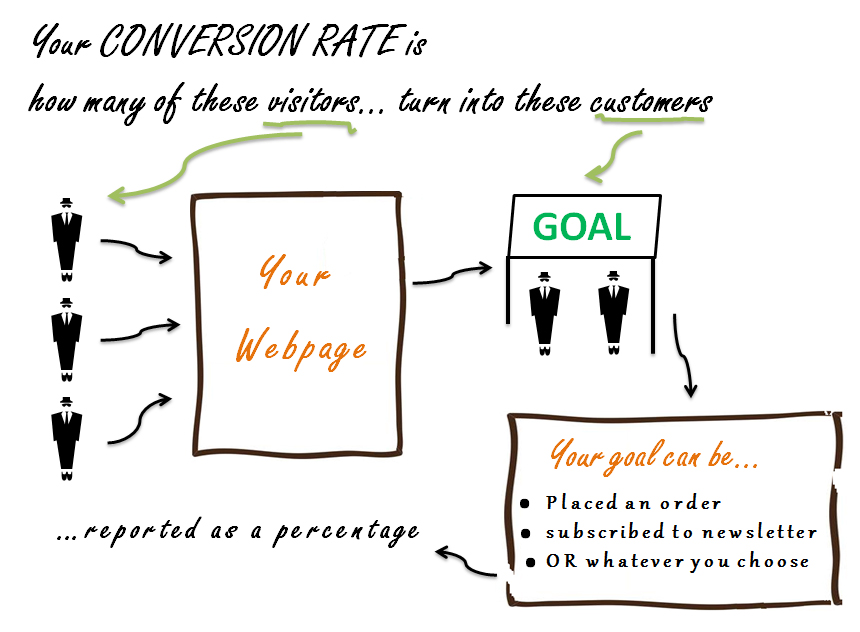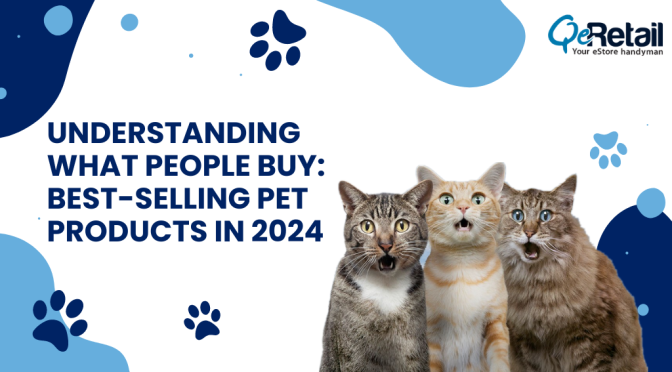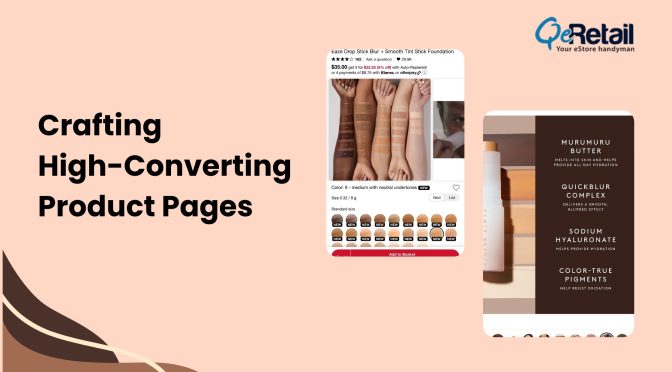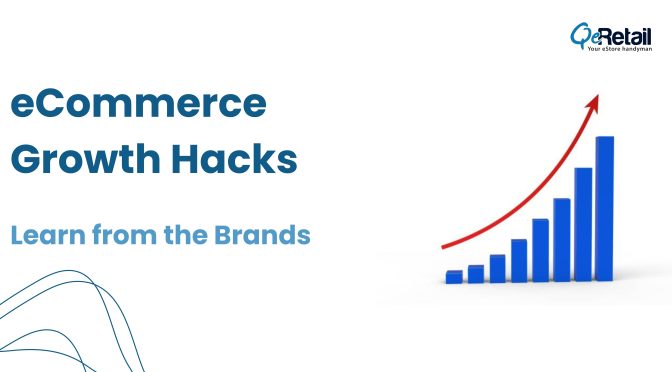According to the US Commerce Department, e-commerce sales grew to 15.6 % ($ 394.86 billion) in 2016 indicating that more consumers are now buying online than in 2015.
Now you are wondering as a smart entrepreneur why I don’t have the piece of this cake. Yes, you are right; your website conversion rate is low or not optimal. The user experience is not seamless and he leaves. So the conversion never happens and sales plummet. Are you looking for an answer for this? If yes, then you need to know Conversion rate optimization (CRO) and why does it matter in the first place (trust me it does).
No, I’m not asking you to know everything there is about CRO. But just enough to understand it’s effect on sales/revenue.
Table of Contents
What is CRO? Conversation rate optimization…
The acronym CRO stands for “conversion rate optimization.”
Your website’s conversion rate is the percentage of visitors who take an action that you want them to take. These action/conversions for some sites could me making a purchase, downloading an app, signing up for an email newsletter or join a mailing list. A single site can have multiple conversions.
Optimizing your conversion rate means the action that you want your visitor to take, you improve/optimize them. So visitors turn into buyers. It is a scientific and structured approach to improving the performance of your website. It does get complex as it seeks to understand/influence people.

How to know the current website conversation rate? No, it is not some complex formula. You just need two numbers: 1) Total visitors on the site 2) Total conversions; the number of people who acted (made a purchase, form signup or so no). Divide the number of conversions with numbers of visitors.
For example, a site with 5000 visitors and 50 conversions has a conversion rate of 1%.

Conversion rate optimization is not
- Based on guess work and hunches.
- Same as SEO where search visibility of the site to the right users is improved.
- Based on what worked for Amazon or someone else. Conversion rate is personal to your website based on your business goals.
- About acquiring users irrespective of quality or engagement.
- A onetime process but continuous process of research and improvement.
You are an entrepreneur & at the end of the day it is revenue, profit or bottom line is what matters.
- Higher ROI: Now you are already paying for the traffic to your site in one way or other (like PPC, Email marketing) and a higher conversion rate means better ROI.
Conversion rate is one of the important metric in Ecommerce as it reveals the total visitors that completed a specific action/goal. The higher the conversion rate the better. – Econsultancy puts it.
- It is Free: CRO capitalizes on the traffic you already have rather than acquiring new customers. You are not spending more on getting new visitors but a doing a better job in converting existing ones.
- CRO helps maximize profits: Since you are not paying more to acquire these conversions, the profit goes right into your bottom line. Hurray!
- CRO defends against limited time attention span of the visitor: Visitor arrived on your site to do something, if your site delivers what they want. You have a client or just lost one.
- CRO lands you on the “slight-edge phenomenon”: When you optimize your eCommerce site to deliver what the visitor wants just a little faster or seamlessly, they’re going to stay with you. This gives you an edge over your competitors.
- CRO gets things moving: When your website conversion rate increases, it means more traffic and more customers and so on. This will over a period of time increase your market share.
Yes, you may be thinking at the back of your head, what if you don’t care about CRO?
- Users will move on to your competitors site, if your site fails to deliver what they want.
- Traffic on the website is not enough, visitors have to become customers.
- The reason you built the website in the first place was for conversions/clients.
- To earn revenue visitors are to become clients.
Here are our top tips on increasing conversions on your ecommerce store
Conversation rate optimization best practices: Follow no best practices
Yes, you read it right. There is no silver bullet here. If any tip or trick does promise quick returns without considering your unique goals and metrics it is probably too good to be true. So you need to roll up your sleeves and find out what’s right for your site.
CRO is context specific (personal to your site). The optimization strategy for your site is based on your business objectives and your conversion scenario. What succeeds for one site, may actually end up hurting user experience (conversion rate) on your site. Even if it does marginally increase your conversion rate, the true barriers in the Conversion Funnel still exist.
End of the day the best practice is to not adhere to any best practice. Your complete focus has to be on Your site, Your users and Your business in reference to CRO.
Tools for Conversation rate optimization:
Let’s move on the practical part of how to go about implementing CRO for improving your website conversion rate.
1. Research and Analysis:
-
- Increasing your client’s motivation to convert is what really moves the needle. To figure this out, you have put time into understanding the current state of the site (get hard measurable data). What are your main site goals/conversions? Is it not true that you can make something better, if you know what better means to you? Getting this insight is your starting point.
-
- Google Analytics, KISSMetrics, Mixpanel are analytics software that can help you track your visitor’s day in and out. It will tell your about unique visitors, bounce rate, exit rate etc. These data will give you an overall picture of where you are losing traffic and where bigger opportunities lie.
2. User Survey:
-
- You do receive hard data from analytics but there is nothing more than hearing it from the horse’s mouth. User survey gives you the ability to gain insight from the user directly. Say for instance you are losing traffic at given point in your Conversion Funnel. You did run through that point several times yourself but cannot point out the problem. It is at this stage that you can place a survey and you will be told what you need to know.
-
- Survey Monkey, Qualaroo, SurveyGizmo, PollDaddy are some of the basic means of conducting surveys.
3. User Testing:
-
- this comes handy when the user cannot articulate the problem. These tools help you to directly observe how users are interacting with your site. Also get user feedback on new product features or new design to improve conversion.
- To know what grabbing user attention (clicking, looking at & lingering); Heat mapping and Click density you can use: CrazyEgg and Click Tale.
- Addition to the above there are A/B Split testing and Multivariate Testing tools. Herein we implement and compare various iterations of your webpage.
- User testing tools: These allow you to get user feedback on your new product features or a new site designs. You can use UserTesting.com and VerifyApp.com
Okay I do understand that it is overwhelming and boring at the same time. But it is important stuff and you can take one thing at a time.
Final Thoughts
Your final takeaway is Conversion rate optimization is new, strategic and here to stay. You are a smart entrepreneur so stay on top of the game. Also, remember that CRO is not a single exercise but a continual process of improvement. You are never “done” testing as there is always room for improvement.







